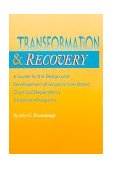Resources for Acupuncture in Chemical Dependency Treatment and Recovery

While random urine testing is often viewed by clients as a potentially "punitive" monitoring device, the National Acupuncture Detoxification Association (NADA) recommends daily urine testing for all clients in the program with the goal of education and therapeutic feedback rather than punitive disclosure, and many local criminal justice referral agencies have fully endorsed this approach for the clients they refer.
At Lincoln and similar programs, the computer software interfaces with an on-site urine testing machine. With substantial client numbers, the cost of urinalysis for the single drug for which the client has been referred to treatment can be reduced to as little as a dollar and a half per test. Multiple client urines are tested at once, and the data is downloaded to the client's attendance file. A print-out of urine toxicity patterns over the period of the client's treatment attendance can be generated while the client is having acupuncture. A subsequent counseling session that begins with the client having this print-out in hand can commence at a far more therapeutic level, because the client's progress is already objectively established. Clinical experience shows that clients come to appreciate this daily feedback. (for a more complete discussion, see "New Perspectives in Chemical Dependency Treatment" in The Journal of Substance Abuse Treatment.
previous
- Read FAQs in Sequence - next
Index of Articles - Links - Home
Scroll Down for More "Frequently Asked Questions"
How many clients can be treated at once?
How often do clients need to be treated?
How long to clients have to keep having treatments?
Does it matter what time of day the acupuncture is provided?
What
national organizations support acupuncture in treating addiction? What
resources are available to support us if we decide to do it?
Does
the acupuncture program have to include herbs or nutritional supplements?
What
is the history of how acupuncture began to be used in chemical dependency
treatment?
What
does the acupuncture clinic look like exactly?
How
much space and extra equipment will we need to do it?
How
do we clean or dispose of the needles after they are used?
How
does acupuncture fit with drug testing?
How
do we find and train people to do the needling?
Could
we just try it experimentally to make sure it's a good fit for us?
What
technical assistance will be required to start and maintain an acupuncture
component?
Is
it compatible with harm reduction?
Is
it compatible with 12-Step or abstinence-based treatment approaches?
Is
it appropriate for mandated or court-referred clients?
Is
it appropriate for adolescents?
Is
it appropriate for pregnant women?
Is
it appropriate for people with co-morbid psychiatric problems?
Is
it appropriate for people with HIV/AIDS?
Is
it appropriate in methadone programs?
Is
it appropriate in residential programs?
What
training is required for current program and administrative staff?
What are the steps we should take to add an acupuncture component?
